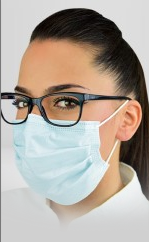An Autoclave is a device used to sterilize equipment and supplies by subjecting them to high pressure saturated steam at 121 °C for around 15–20 minutes depending on the size of the load and the contents. It was invented by Charles Chamberland in 1879.
Autoclaves are widely used in microbiology, medicine, Medical Offices, tattooing, body piercing, veterinary science, mycology, and Dentistry. They vary in size and function, depending on the media to be sterilized.
Autoclaves are found in many medical settings, laboratories, and other places that need to ensure the sterility of an object. Many procedures today employ single-use items rather than sterilizable, reusable items.
A medical autoclave is a device that uses steam to sterilize equipment and other objects. This means that all bacteria, viruses, fungi, and spores are inactivated.
There are physical, chemical, and biological indicators that can be used to ensure that an autoclave reaches the correct temperature for the correct amount of time.
Chemical indicators on medical packaging and autoclave tape change color once the correct conditions have been met, indicating that the object inside the package, or under the tape, has been appropriately processed. Autoclave tape is only a marker that steam and heat have activated the dye. The marker on the tape does not indicate complete sterility. Biological indicators contain spores of a heat-resistant bacterium, Geobacillus stearothermophilus. If the autoclave does not reach the right temperature, the spores will germinate when incubated and their metabolism will change the color of a pH-sensitive chemical.
Elevate your dental practice's infection control standards with Dental Autoclaves! Our cutting-edge Dental Autoclaves assure impeccable sterilization, ensuring patient safety is your top priority.
Designed with precision and reliability in mind, our Dental Autoclaves guarantee the complete elimination of harmful pathogens and bacteria. Trust in a sterilization process that exceeds industry standards, giving you peace of mind and protecting your patients.
Experience the convenience and efficiency of user-friendly controls and advanced technology, reducing sterilization time and enhancing workflow.
Invest in the future of your dental practice and maintain the highest standards of Sterilization. With our Dental Autoclaves, you're not just ensuring compliance; you're ensuring the well-being of your patients and the reputation of your practice.
Join the ranks of dental professionals who prioritize safety and excellence. Upgrade to a New Dental Autoclave and make a significant impact on the health and trust of your patients. Choose reliability, choose excellence, and choose a Dental Autoclave from Lions Dental Supply today!

